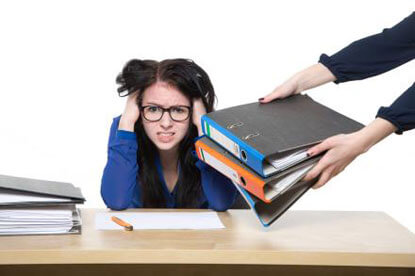Summary: A new study by a law school professor finds that lower tier law schools saw the largest increase in minority students from 2010 to 2013.
According to the National Law Journal, the percentage of Hispanic and African American students enrolled in law school increased from 2010 to 2013, but the increase was seen mainly at those law schools that have lower admission standards.
Schools nationwide have lowered their admission requirements.
Professor Aaron Taylor of Saint Louis University School of Law studied LSAT scores, enrollment numbers, and application patterns for both minority and white students in 2010 and 2013. His goal was to determine how the drop in law school applications across the country has impacted law school diversity.
What he discovered was that law schools that have the lowest median LSAT scores for incoming classes appear to rely disproportionately on Hispanic and African-American students to fill up slots in those classes. Interestingly, those law schools that require higher LSAT scores for admission suffered a decrease in African American and Hispanic students from 2010 to 2013.
Taylor said, “You’ve got more black and Hispanic students attending schools that are considered less prestigious in 2013. That could have long-term implications on the career paths and trajectories of minority students. Bar passage rates are part of the issue. But even if all of those people pass the bar, they will still have different careers,” compared to those who graduate from top schools.
However, Taylor praised the lower-tier law schools for improving diversity overall in the legal profession, which is still predominately white. Taylor explained that top law schools should also work to increase diversity by admitting more Hispanic and African American students. He commented, “Schools that can ensure good career prospects aren’t making diversity a priority. There seems to be much more of a focus on the [LSAT and grade-point average] numbers.”
Gilberto Ruiz, a student in his second year at Northern Illinois University College of Law who also serves as the director of public relations for the National Latina/o Law Student Association, seemed torn about the findings of Taylor’s study. He said, “There are some pluses and some drawbacks. There is more diversity, which is good, but it’s only at the lower-tier schools. Not at the top 10, top 15 schools.”
In 2013, the Supreme Court agreed to hear arguments on affirmative action.
Ruiz’s class has enrolled a large percentage of Hispanic students. “It’s good to have individuals who are from the same cultural background in law school. You can relate to them,” he explained.
Darnell Smith is an African American student at Western Michigan University Cooley Law School. Smith notes that the relationship between school prestige, admissions, and diversity is a complex one. “The legal profession can benefit from more diversity. Should those students only attend low-ranked law schools? Absolutely not. But I don’t think low-ranked law schools should be blamed for giving students an opportunity.”
Taylor explained that he studied the years 2010 and 2013 because they were “feast or famine” times for law schools. The 2010 incoming class was the largest on record, but just three years later enrollment had dropped by close to 25 percent, yielding the smallest number of new law students in four decades.
During this period, LSAT scores dropped. In 2010, the median LSAT score was 157, but in 2013, it was 155. Those schools that had higher median LSAT scores in 2010 were able to better maintain their numbers, but lower-tier law schools suffered a decline in their scores.
Lowering LSAT score requirements may have serious consequences for law schools.
Admission rates increased from 36 percent in 2010 to 51 percent in 2013. Although such numbers would generally lead to greater diversity, the number of minority students actually declined. The decline was smaller than the overall decrease in law students, however. The proportion of minority students in the law school population increased from 25.5 percent to close to 30 percent during this time.
Taylor split law schools that have been accredited by the American Bar Association into five tiers based on median LSAT scores. Each tier contained about 20 percent of accredited law schools. Only the tier with the lowest median LSAT scores saw an increase in both the number of minority students and in the proportion of students overall.
Private and for profit law schools, at the bottom tiers, were also partly responsible for the increased percentages of Hispanic students and African American students. Taylor said, “The Charlotte School of Law enrolled over 100 more black students in their first-year class in 2013 than in 2010. The for-profit schools were really drivers of the rising numbers of black and Hispanic students. These schools lost large numbers of whites and Asians, and it appears they replaced some of them with black and Hispanic students.”
Such measures are fine so long as the schools support the students it has admitted to ensure that they succeed, he noted.
Jay Conison, the dean of Charlotte Law, said that the increase in diversity was a positive change. “Insofar as the school was established to be a place that creates a pathway into the profession for underrepresented minorities, I’m having difficulty understanding how anyone could think that’s a problem.”
The median LSAT score at Charlotte Law dropped from 150 to 148 from 2010 to 2013. However, Conison offered assurance that the school offers academic support as well as bar preparation programs. In addition, it has created a conditional admission program in which students with lower academic credentials—those who may not be outright admitted to the school–may take two law school courses to prove their abilities.
Asian American students actually suffered declines across all categories, according to Taylor. The population of Asian American students dropped by nearly a third from 2010 to 2013. These declines were smaller at top-ranked schools.
Taylor noted that many white and Asian American prospective students chose other paths in 2013. Many Asian American students who did attend were admitted to higher-ranking schools than they may have been in 2010. This left a deficiency of Asian American students at the less prestigious schools.
According to US News, law school applications and LSAT test takers are expected to increase in 2015. How this impacts diversity remains to be seen.
Source: National Law Journal
Photo credit: blog.carneysandoe.com
















































